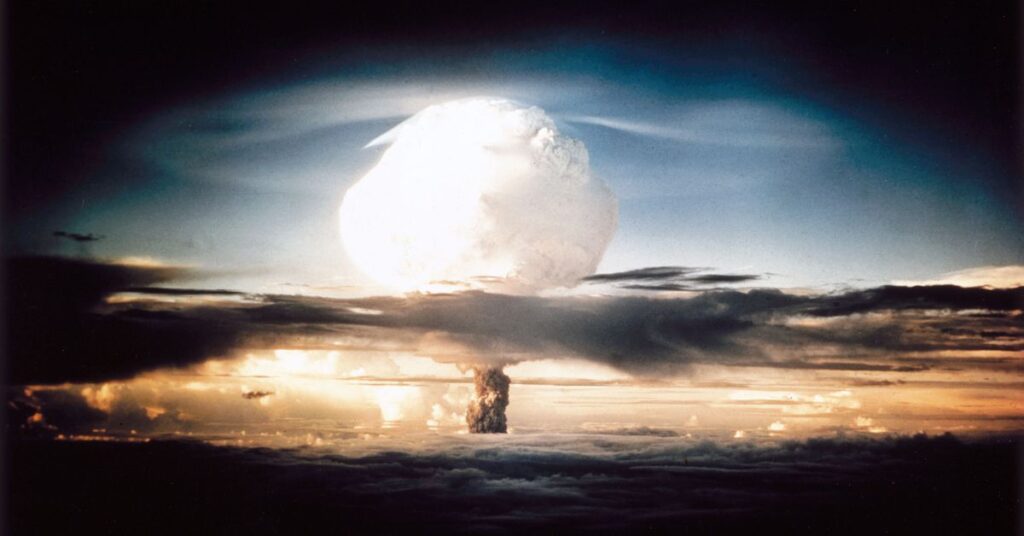My wife and I went to see Oppenheimer on opening weekend in July, and I wore my best Los Alamos-themed costume. We opted for the biggest screen we could — and as the Trinity test explosion kept on rising higher and higher endlessly upward, I was glad we had sprung for the more expensive IMAX ticket for the sheer spectacle. I could guess, even then, that this film was destined for this weekend’s Academy Awards, where it will compete for 13 Oscars, including Best Picture and Best Director.
But then the final scene rolled around — showing Los Alamos lab director J. Robert Oppenheimer’s vision of rows and rows of intercontinental ballistic missiles (ICBMs), the rockets zooming upward — and then the Earth from space with mushroom clouds rising above the clouds and fire spreading across the globe
As the strings rose to their final jarring crescendo, I found myself unexpectedly and uncontrollably bawling my eyes out. I sat in my chair at the London Science Museum cinema, my shoulders shaking, speechless with tears, trying to gasp out to my wife between sobs what on earth was going on with me. “It’s all still real,” I told her. “The weapons are still there. Every 12 minutes they could kill us and everyone we love. The entire Northern Hemisphere would be gone. We’d all starve to death. Five billion people could die.”
I’ve worked at the University of Cambridge’s Centre for the Study of Existential Risk for the past seven years, where we study risks that could lead to human extinction or civilizational collapse — and how to prevent them. Most of our conversations at the pub across the road from the office are about climate change, engineered pandemics, artificial intelligence, and yes, nuclear weapons.
The most common question I get asked is “doesn’t working on…
Read the full article here





